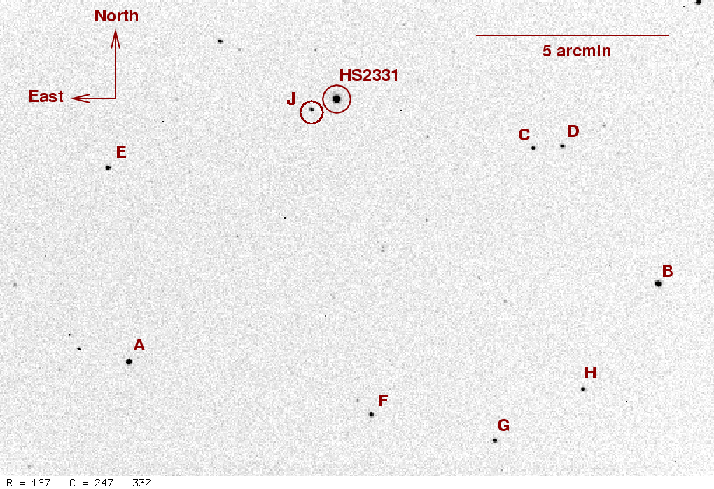
On the night of Sep 24/25, 2007 EDT, Joe Panzik used the RIT Observatory's 12-inch Meade telescope and SBIG ST8 CCD camera to monitor the cataclysmic variable star HS 2331+3905 (also known as V455 And), which was in the early stages of an outburst. This star is a cataclysmic variable similar to WZ Sge. For more information about it, read
The plan tonight:
Notes from the night
This is a chart of the field based on images taken on earlier nights. Click on the chart for a larger version.
The chart has several of the brighter stars in the field labelled with letters, just to keep me straight as I perform the reductions. Some of these stars have good photometry, as mentioned in AAVSO Alert Notice 357 .
my
label RA Dec V B visual
----------------------------------------------------------------------------
23:37:10.49 +39:27:09.7 8.366 (0.014) 9.430 (0.025) 84
23:31:57.51 +39:19:43.4 9.248 (0.024) 9.969 (0.031) 93
23:33:05.63 +39:23:11.8 9.572 (0.029) 10.693 (0.059) 96
23:33:53.74 +38:57:22.6 10.007 (0.042) 11.115 (0.087) 100
23:34:46.69 +39:16:44.0 10.310 (0.043) 10.961 (0.054) 103
B 23:33:23.41 +39:17:58.8 10.481 (0.055) 11.167 (0.070) 105
A 23:34:23.38 +39:15:34.9 10.900 (0.078) 11.393 (0.076) 109
I'll use the star marked "A" to set the zeropoint of my differential magnitudes back onto the standard system, at least roughly.
I measured the instrumental magnitude of each star with aperture photometry, using a radius of 6 pixels = 11.1 arcseconds and sky defined by an annulus around each star. Following the procedures outlined by Kent Honeycutt's article on inhomogeneous ensemble photometry, I used all stars available in each image to define a reference frame, and measured each star against this frame.
Below is a graph of the scatter in differential magnitude versus magnitude in the ensemble solution.
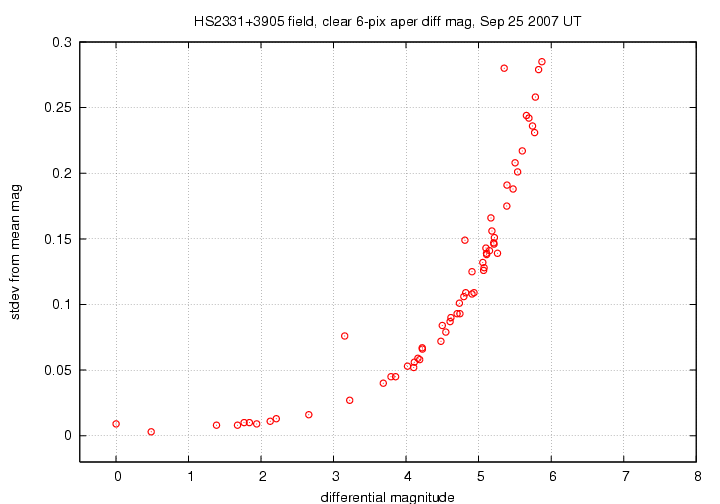
HS 2331 is the star with large scatter at differential magnitude 3.2. The brightest comparison star, "A", is probably somewhat saturated in some images. Stars "B" and "C" have scatter of 0.003 and 0.008 mag, respectively, from their mean values.
Light curves for selected stars (HS 2331 and stars A - J) in the field are shown below. HS 2331, shown by light green crosses near the bottom, is clearly variable.
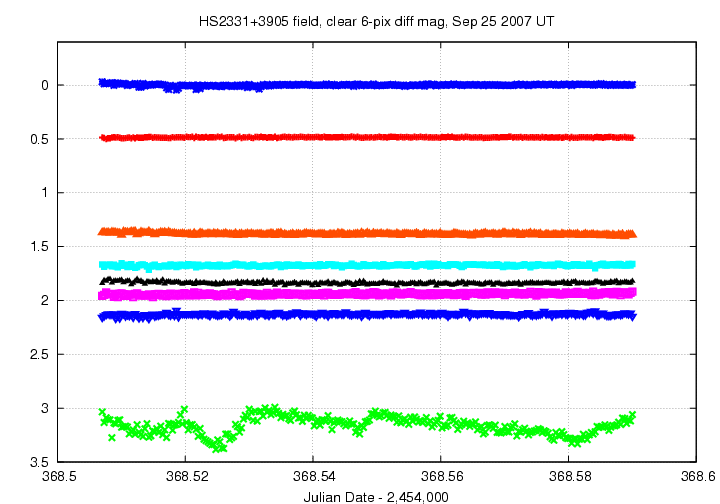
Here's a closeup of the variation in HS 2331 itself. I've also plotted the measurments of nearby star "J", shifting them by 0.7 magnitudes so that they would fit nicely on the graph
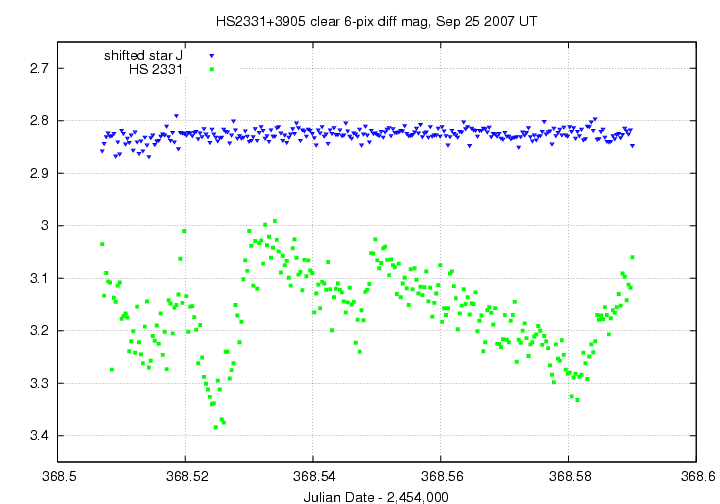
You can see that the star has faded considerably since the outburst was discovered on Sep 4:
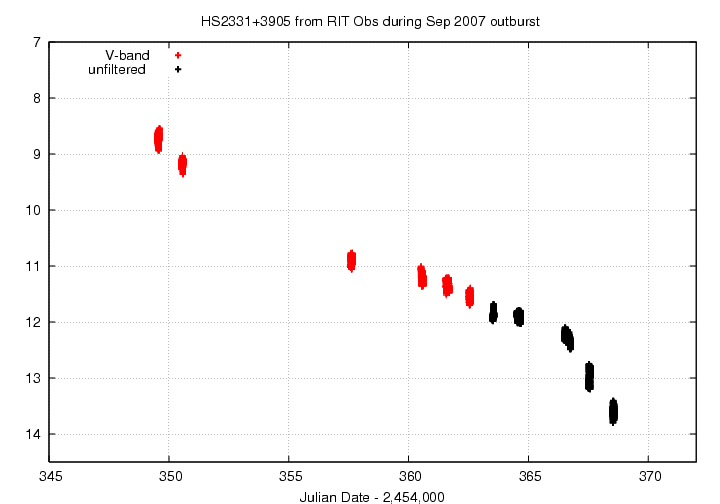
I've made a table of the measurements themselves, with three different flavors of time. The differential magnitudes from the ensemble solution have been shifted so that star "A" in my chart, TYC 3231-533-1, has value 10.900. Remember: this data is unfiltered, but I am shifting the zeropoint to make star "A" match its V-band value.
Here's the start of the table.
# Measurements of HS 2331+3905 made at RIT Obs, Sep 25, 2007 UT, # made by Joe Panzik. # All data taken with 12-inch LX-200 + no filter + SBIG ST-8 CCD # no focal reducer, so at native f/10 # Each exposure 15 seconds long; tabulated times are midexposure # and accurate only to +/- 1 second. # 'mag' is a differential magnitude based on ensemble photometry # which has been shifted so TYC 3231-533-1 mag=10.900 # to match value from AAVSO Alert Notice 357. # # UT day JD-2,450,000 HJD-2,450,000 mag uncert Sep25.00701 4368.50701 4368.51148 13.450 0.024 Sep25.00731 4368.50731 4368.51178 13.548 0.027 Sep25.00764 4368.50764 4368.51211 13.505 0.027
Last modified 9/26/2007 by MWR.